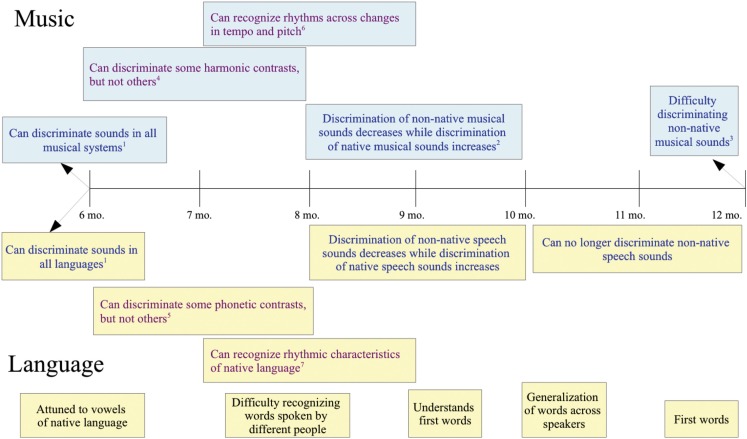Figure 1.
Blue print denotes parallel development. Purple print denotes related, but not analogous development. Black print denotes language-only development. See main text for citations not listed here. (1) Six-month olds can discriminate changes in Western and Javanese scales, can discriminate simple and complex meters, and can discriminate the phonemes of all languages. (2) Nine-month olds can detect pitch or timing changes more easily in strong metrical structures and more easily process duple meter (more common) than triple meter (less common; Bergeson and Trehub, 2006). (3) Twelve-month olds can better detect mistuned notes in Western scales than in Javanese scales and have more difficulty detecting changes in complex than simple meters. (4) Between 6 and 8 months, infants can discriminate consonant from dissonant intervals, but have difficulty discriminating between different consonant intervals (Schellenberg and Trainor, 1996). (5) Between 6 and 8 months, can no longer discriminate non-native vowel contrasts, but can still discriminate non-native consonant contrasts. (6) Trehub and Thorpe (1989). (7) At 7.5–8 months, English speaking infants show a bias for stress-initial words and are sensitive to prosodic and frequency cues to word order.

